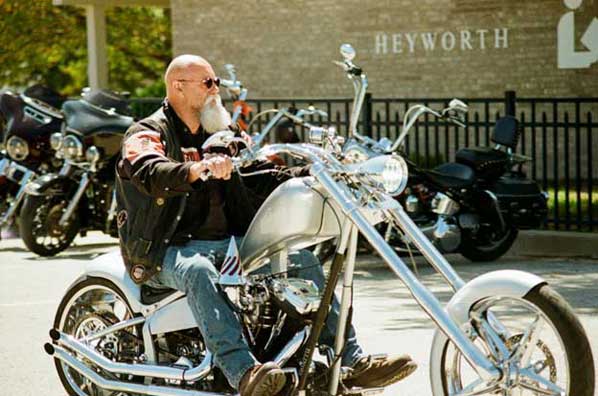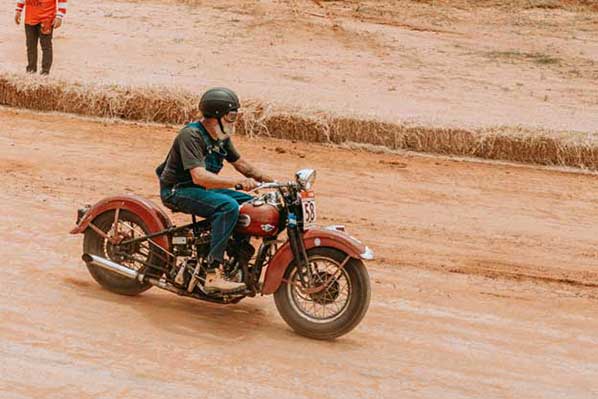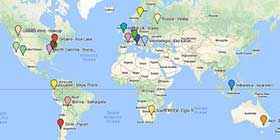There’s a kind of freedom that only a motorcycle can offer—the hum of the engine, the curve of the road, the thrill of riding under open skies. For riders who’ve clocked decades in the saddle, that freedom doesn’t fade with age. But just like your gear, your safety strategy should evolve over time. As experience grows, so should the tools you rely on—not just to maintain your bike, but to protect yourself.
Yes, torque wrenches and tire gauges still belong in your saddlebag. But these days, so do smart devices that keep you connected, protected, and prepared for the unexpected.
And that’s where modern senior alert solutions come into the picture—not to clip your wings, but to make sure your next ride doesn’t end up relying on luck alone. From wearable medical devices to GPS-enabled emergency contacts, today’s riders have access to tools that can quite literally be lifesavers, especially when the road stretches far and wide.
Let’s look beyond the standard toolkit and explore the smart safety upgrades every senior rider should consider before their next long-haul trip.

Photo by J.S. McDuff from Pexels
Old Habits, New Roads: Why Smart Safety Matters More Than Ever
Let’s face it—riding is a physical activity. You may be mentally sharp and know your bike inside out, but your body changes with time. Reaction times get a little slower. Recovery takes a bit longer. Long rides become more physically demanding. That doesn’t mean you should stop; it just means your safety plan needs to be smarter.
Traditional safety checks still apply—brakes, fluids, lights, tires. But when you’re miles from the nearest town or riding solo through rural areas, your own well-being becomes the most important system to monitor. A flat tire is inconvenient. A health scare in the middle of nowhere? That’s a whole different story.
Modern safety tools can fill the gap. And most of them weigh less than your toolkit.
The Digital Wingman: Wearable Medical Alerts
Forget the clunky devices of decades past. Today’s wearable alert systems are lightweight, discreet, and designed for active adults. Some clip onto your gear; others are worn like a watch or pendant. Many include features like:
- Fall detection
- One-button SOS alerts
- GPS tracking
- Two-way communication with emergency services
These aren't just for the home anymore. Many devices are cellular-enabled, meaning you don’t need to rely on Wi-Fi or be in a specific location for them to work. If something happens—whether it’s a fall, a sudden medical issue, or a crash—help is literally at your fingertips.
And for riders who prefer solitude on the road, that peace of mind is hard to put a price on.
Pre-Ride Health Check: Tune-Up Your Body Too
You wouldn’t ride a bike with worn brake pads. So why ride when you haven’t checked in with your own body?
Before any long-distance trip, senior riders should take a moment to consider:
- Medication timing and side effects: Some prescriptions can cause drowsiness or dizziness. Make sure you understand how your meds interact with heat, dehydration, and long hours in the saddle.
- Hydration and nutrition: Dehydration can creep up fast on a warm day and cloud your thinking.
- Vision and hearing: You need both at their best to anticipate hazards on the road.
- Fatigue management: Schedule realistic stops. Your ride should be an adventure, not an endurance test.
And if you’re ever in doubt, consider scheduling a quick check-in with your doctor before your trip. A green light from your physician is just as valuable as one from your mechanic.
GPS Isn’t Just for Directions Anymore
We all love a paper map for planning, but during a ride, GPS is your best friend—not just for finding your way, but for keeping others in the loop.
Modern GPS systems (or apps on your phone) now allow real-time location sharing. That means a loved one can see where you are, even if you forget to check in. Some even have "ride tracking" features that log your route and send alerts if you stop moving unexpectedly.
For group riders, that’s helpful. For solo riders, that’s critical.
If you're using a personal alarm device with built-in GPS, you double down on safety without any extra gear to carry.
Roadside Emergency? Communication Tools Are Key
Your phone is great—when you have signal and battery. But what if you don’t?
That’s where satellite messengers and emergency communication devices come in. These compact tools work beyond cell coverage and can send a pre-written text with your GPS location or trigger an SOS to emergency responders.
You don’t have to be crossing the Andes for these tools to be useful. Even backroads in your home state can become dead zones. Having backup communication can turn a dangerous delay into a manageable detour.
Smart Packing: Add Safety Without Adding Bulk
Senior riders often ride lighter, and with good reason—less weight means better balance and less fatigue. The good news? Most modern safety tech is tiny.
Here are smart safety additions that won’t take up precious bag space:
- Portable power banks for recharging phones and GPS units
- Compact first aid kit, including basic meds and allergy relief
- Personal alarm device, ideally wearable
- Reflective gear and auxiliary lighting, especially for dusk or early starts
- Emergency contact card, printed and laminated, in case digital devices fail
The idea isn’t to overpack—it’s to outthink. Smart gear doesn’t weigh you down; it lifts the weight off your mind.
Ride Solo, Stay Connected
Many older riders hit the road alone, by choice. It’s peaceful. It’s personal. But it also means there’s no one else around if something goes wrong.
That’s why building a connection plan matters. A few tips:
- Let someone know your daily route and planned stops
- Use a check-in app or send a quick text at rest points
- Consider using a ride-sharing platform for motorcyclists, where others can follow your route
- Set your emergency device to automatically contact help if you don’t respond within a certain timeframe
You don’t need to ride in a group to ride with confidence—you just need a system that has your back.
Myth-Busting: Safety Tech Isn’t “Giving In”
There’s a common misconception that carrying medical alert gear or safety devices means admitting weakness. That couldn’t be further from the truth.
The most skilled riders know how to manage risk. They wear the right gear, service their bike, and choose routes that suit their skill level. Adding smart safety tools is no different—it’s a mark of wisdom, not fear.
And let’s be honest: if you’ve made it this far in your riding life, you’ve earned the right to use every tool available to keep rolling strong.

Photo by SAULO LEITE from Pexels
Wrapping It Up: Safety That Keeps the Adventure Going
The road doesn’t care how old you are. But your safety setup should.
Today’s senior riders aren’t slowing down—they’re just getting smarter about how they ride. And that includes packing more than wrenches and spare bulbs. It means gearing up with technology designed to keep you safe, even when the unexpected hits.
So before your next ride, do the usual checks—tire pressure, lights, oil, fuel. But also check your personal systems: Are you physically ready? Is someone tracking your ride? Do you have a way to call for help, even in a signal dead zone?
Adding smart safety isn’t about riding less. It’s about riding longer. On your terms. With peace of mind packed right alongside your sense of adventure.

















